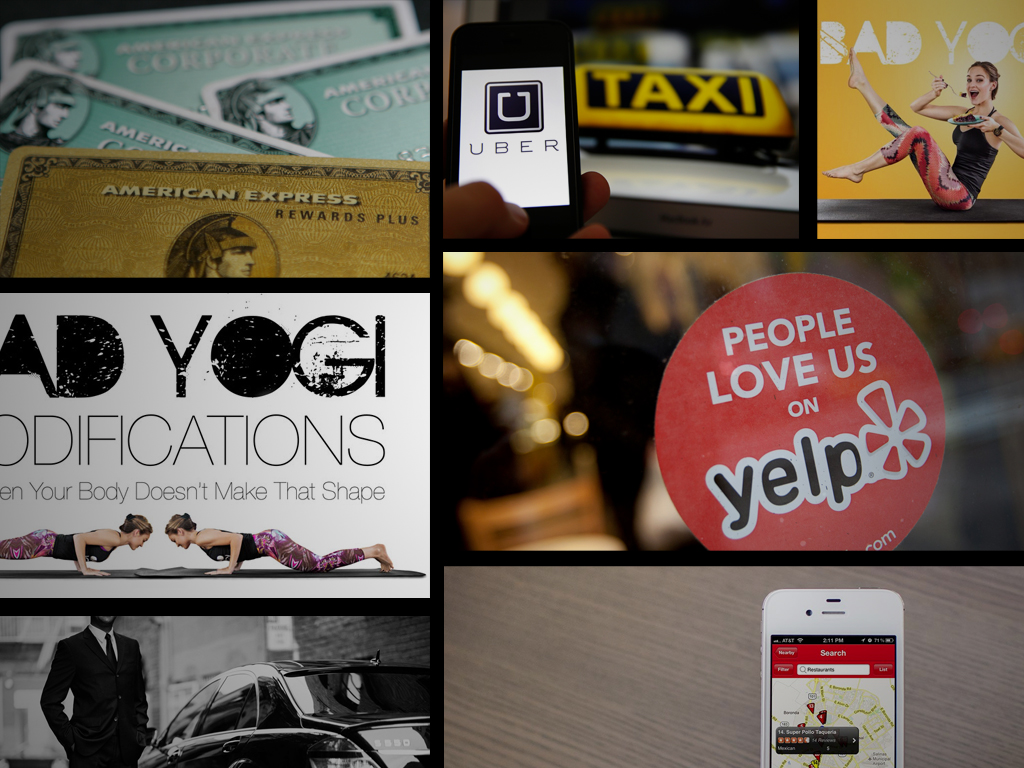Brand values are inextricably bound to brand identity, which is defined as “the way a brand wants its consumers to perceive its brand.” Brand identity and values now evolve and becomes shared, not only by the company, but by all of those involved in the customer journey. Companies old and new are tasked with clearly defining their brand values as part of brand identity. Here are four signs that Uber hasn’t yet clearly defined their brand values, and five lessons for brands.
On-demand ride service Uber has struggled in recent weeks with PR disasters ranging from their VP of Business recommending that they spend $1M for digging up dirt on journalists to violating state law and getting shut down in Nevada to Uber drivers striking for better fares to questionable use of the data they collect. It earned them this headline from the New York Times: “We Can’t Trust Uber”.
So why are consumers losing trust in Uber?
1. Leadership Isn’t Believable
Uber CEO Travis Kalanick published a post Dec. 4 on their company blog, “Ride Ahead”. His statement focuses on their financial coups, which include recently getting an additional $1.2 billion in funding with an expected valuation of more than $40 billion.
His only nod to recent negative events in the blog post was, “This kind of growth has also come with significant growing pains.” It doesn’t include any specifics about recent events or how Uber will handle them moving forward. The post focuses on continued growth strategies but doesn’t illuminate how they will define brand values or improve brand perception.
2. Continued Abuse of Technology & Privacy
Uber staff was recently accused of abusing their “God View” technology to track journalists. When they launch their presence in new cities they have been accused of using their technology to abandon ride requests from city or other officials that could leverage fines to the company or drivers.
In the New York Times article, writers Zeynep Tufekci and Brayden King outline real and potential abuses of Uber data. To date the company hasn’t shared a privacy policy that would protect rider data and enforce stricter guidelines.
3. Not Learning From Their Mistakes
When Uber launched in Portland, Oregon last week, city officials spoke against their support and legality of the service.
“People should know that Uber’s action is illegal,” Mayor Charlie Hales said in a Facebook post, “The city will enforce existing regulations. That could include fines for the company, as well as fines for drivers.”
Though stonewalling on the city of Portland’s part may not be sustainable, ignoring local regulations continues to be a part of Uber’s growth strategy. After being shut down in Nevada, their recent actions in Oregon illustrate they have no intention of abandoning their approach of coming to a city and bullying their way in.
When they vow to become a “more humble” company, but continue to ignore local regulations and provide service illegally as they are doing in Portland, it’s difficult to take their mea culpas as a serious effort to change brand values and learn from their mistakes.
4. Resources Aren’t Prioritized To Address Brand Values
Their first big move after their recent PR disasters was hiring Goldman Sachs to raise money from the bank’s clients. Though efforts need to stay focused on growth and investment particularly in light of a likely IPO, Uber isn’t investing in defining their brand value the way they are investing in brand valuation.
A recent NPR article (“Uber Is Richer Than Ever, But The Company Still Isn’t Playing Nice”) highlights the companies continued focus on growth and lack of focus on ethical behavior.
There have been many incidents reported of resources prioritized towards undermining competition (earlier this year Lyft accused Uber of canceling more than 5,000 rides on its service over a 10-month period in an effort to sabotage the company) and very little discussion of creating and prioritizing brand values.
What Brands Can Learn
Uber’s missteps provide five lessons for brands who want to be consumer-centric and create a brand with values.
1. Define And Share Your Brand Values
The world’s most valuable brands, including Apple, Google, IBM, Microsoft and Coca-Cola, invest heavily in creating and sharing their brand values. If employees and customers don’t know your brand values it’s not possible for those values to drive behavior.
“Coke brings joy” – this simple value drives content, communication and engagement. The brand’s core values of happiness, refreshment, optimism, fun, simple moments of pleasure, authenticity and coming together are the driving force in their marketing and business efforts. These values are the pillars upon which the brand is built and they are not negotiable.
2. Believe In Your Product
Uber’s app, its service and it’s technology are superior. Uber’s actions indicate that they don’t believe that’s enough – or at least that it doesn’t get them to where they want to go quickly enough.
3. Invest in Leadership
The leadership that drives a company sets the tone, the brand voice and brand perception. Of course leadership are expected to drive financial growth and have credentials that support that initiative but leadership is a soft skill. One that is more difficult to test than budgeting acumen, operational logistics or technology excellence.
The world’s most valuable brands invest in teaching leadership. Google offers leadership programs for learning and development. Apple develops different programs for store-level leaders as well as executive roles.
Uber has grown very quickly. While they’ve built in process for hiring the right people to solve business problems, they have done little to solve the problem of developing ethical leadership.
4. Listen To Your Customers & Your Critics
Ultimately, your brand voice and brand perception isn’t just defined by the company. It’s defined by an aggregation of voices including your customers and your critics.
When Uber ignores drivers’ pleas for better fares or dismisses city officials’ requests to comply with local laws they are missing an opportunity to positively impact the strength of their brand voice.
A brave move by Uber at this point would be full transparency into how they are addressing their brand reputation as a bully. Their relative silence on how they are responding to the opinion that their brand is ethically challenged ignores the voice of customers and critics.
5. Be in it for the Long Haul
In the book “The Living Company: Habits for Survival in a Turbulent Business Environment” by Arie de Geus, his in-depth analysis outlines four benchmarks to long-lived companies. They were:
- Sensitive to their environment.
- Cohesive, with a strong sense of identity.
- Tolerant.
- Conservative in financing.
History is littered with stories of brand rise and fall in companies new and old. As a new company, it isn’t surprising that this second benchmark, being cohesive with a strong sense of identity, isn’t fully developed for Uber yet.
Uber’s technology, revenue, valuation, and growth trajectory are tangible. Their biggest challenge may be aligning intangible assets such as brand identity and values with their enviable tangible assets.
What should Uber do to start regaining consumer trust and define their brand values? Share your thoughts in the comments.


